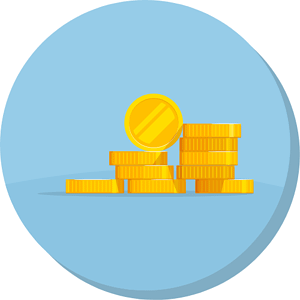How to Pay off debt
One of the best ways to get to financial independence is being debt-free. Holding any debt is setting you back every single month because you need to pay the premium monthly or quarterly.
- Create a plan with a fixed additional amount you can set towards your debt payments besides the minimum contribution
- Be consistent by following your plan every month.
- Be patient! Especially when choosing the avalanche method.
- Never miss a payment on your loan!
- Track your progress
Read on how you can become debt-free, using either snowball effect or snow avalanche method and also figure out which method is for you!
Why do people get into debt?
Paying off debt sound easy. However, in reality, it is challenging; there is a physiological effect when a person is sitting in debt. When you buy your first house (whether being a few hundred thousand or in millions), you are signing a contract for 30 years. It is likely only a few thousand a months, giving you plenty of room in your budget. So you pick up a car loan, later on, you decide to pick up a credit card loan because the store had this incredible sale, but the paycheck is first next week. In this way, the ball is rolling
Today it is too easy to get a loan. Go online, and 30 minutes later you brought a fancy new Tesla Model 3 worth 39,000 USD by only paying 630 USD up front, however you locked yourself for 72 months and end up paying a total of 42,000 USD or 3,000 USD in interest!
Before you realise it, you have put yourselves into a massive amount of debt way above your head. At this point, it is nearly impossible to get out of it.

How to pay off debt effectively
Many ways to pay off debt exist, but the essential part of all strategies is setting money aside and be consistent. it is important when investing, and equally important when paying off your debt.
Before we get into the methods of this article, I will ask you to make a plan. A realistic plan you can follow. Whatever way you choose, without a plan before you even get it started, you will lose the motivation.
- Create a plan with a fixed additional amount you can set towards your debt payments besides minimum contribution
- Be consistent by following your plan.
- Be patient! Especially when choosing the avalanche method.
- Never miss a payment on your loan!
- Track your progress
With above guidance set. Let’s get into some concrete examples of how to pay of debt using:
1. The Avalanche strategy
2. The Snowball effect strategy
How to use the debt Avalanche?
The avalanche method is having nearly the same approach as the Snowball strategy. Therefore, comparing the two methods is simple.
For the Avalanche method. Your focus is the loan with highest interest rate.
The way you pay off your debt using Avalanche strategy is:
1. Across all loans, pay the minimum required payment
2. Select the loan with highest interest rate and pay additional contribution to it.
3. Do not look at loan amount, or length of loan periods left. Focus only ranging the loans as highest interest rate to lowest.
Following the avalanche method for debt repayment, you would repay your debts in the following order, while of course, maintaining your minimum payments on all:
| DEBT | BALANCE | MINIMUM PAYMENT | INTEREST RATE |
| Credit Card #2 | $5,500 | $150 | 17% |
| Credit Card #1 | $500 | $20 | 12.5% |
| Car Loan | $3,000 | $100 | 6.5% |
| Student Loan | $10,000 | $180 | 4.5% |
How to use the Debt Snowball?
For the snowball strategy, a method made popular by Dave Ramsay’s baby steps towards financial freedom.
This method only differ compared to snow avalanche on the way to select loan.
Snowball strategy say you should focus on the smallest loan among all loans.
The way you pay off your debt using Snowball strategy is:
1. Across all loans, pay the minimum required payment
2. Select the loan with smallest dollar amount and pay additional contribution to it.
3. Do not look at interest of the loan, or length of loan periods left. Focus only ranging the loans as lowest dollar amount to highest, and start paying off the smallest first.
Listen to Dave Ramsay explaining the Snowball strategy. He point out the ways to pay off the debt. He highlight the psychologically of snowball versus Avalanche method.
Let me know what you think in the comment belows.
For example, in the table below are four hypothetical debts listed, from smallest balance to largest. Using the snowball method for debt repayment, you would repay these debts in this order, again, while still maintaining your minimum payments on all.
| DEBT | BALANCE | MINIMUM PAYMENT | INTEREST RATE |
| Credit Card #1 | $500 | $20 | 12.5% |
| Car Loan | $3,000 | $100 | 6.5% |
| Credit Card #2 | $5,500 | $150 | 17% |
| Student Loan | $10,000 | $180 | 4.5% |
Lets put the numbers in play!
Let’s say you got 1000 in your local currency to pay off your debt (The more the better). Below you will find 3 methods using the numbers presented above previsouly.

Minimum Payment Method
By making just the minimum payments on your debt, it will take you over over 25 years to pay off your debt and you will pay over over $9,554.60 in interest charges. This is extra money you will pay which doesn’t go towards paying off the actual debt you accumulated. (Ouch!)

Snowball Method
You have $1,000.00 to pay towards your debt every month. You decide to focus on paying down the debts with the smallest balances first, while continuing to make minimum payments on your other debts.
Using this method, it will take you 1.8 years to pay off your debt and you will pay $1,337.47 in interest.
it would only take you 0.1 year to pay off your first loan!
Using the snowball method of debt repayment, you may be able to pay off credit card debt faster than you would with the avalanche method. However, you might end up paying a bit more in interest with this repayment plan.

Avalanche Method
You have $1,000.00 to pay towards your debt every single month. You decide to focus on paying down the debts with the highest interest rates first, while continuing to make minimum payments on your other debts. You minimize your interest charges by attacking those high interest debts first.
Using this method, it will take you 1.8 years to pay off your debt and you will pay $1,134.23 in interest.
It will take you 0.5 year before the first loan is paid off
Using the avalanche method of debt repayment, you can save more in interest than you would by using the snowball method; however, it might take you a bit longer to see that first loan or debt balance paid off in full.
The Pros and Cons of Avalanche versus Snowball strategy
| Avalanche Strategy | Snowball Strategy | |
| Pro |
The fastest way to get out of debt the smallest amount of Interest paid Mathematically better approach than Snowball |
Higher successrate for people than Avalanche Seeing progress earlier Psychologically proven better than Avalanche strategy |
| Con |
Demotivational Hard to see any progress for a long time Higher failure rate than Snowball Strategy
|
Paying the highest amount of Interest fee Slower than Avalanche strategy |
The conclusion of the article
In the above, we looked at two methods to pay off the debt against paying the bare minimum.
As proven above, both of the methods was faster than the minimum payment method.
However, which of the methods is the right for you, is for you to decide.
The key points are:
- Mathematically Avalanche is the cheapest option as you pay the highest interest first.
- Psychologically the snowball effect is easier and better as you get those small victories, and you see your available amount to pay down the loan increase.
- You should know hybrid exists. Such as get the smallest out of the way using snowball, and then switch to avalanche or rank each loan after type takes the smallest credit card with high interest. You can also consolidate loans into bigger loans with lower interest
But ultimately, and at the end of the day, no matter the method. The most crucial point is paying down consistently, and use the money freed up towards your next loan until you are debt-free! And one step closer to financial independence.
